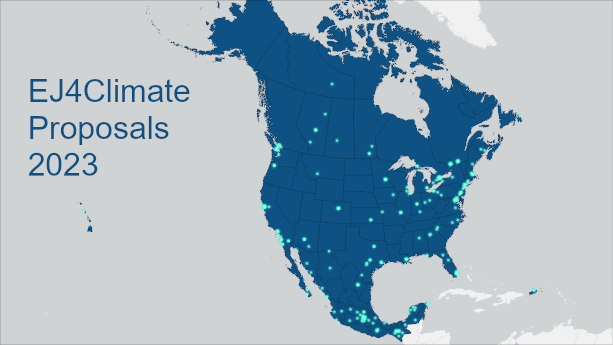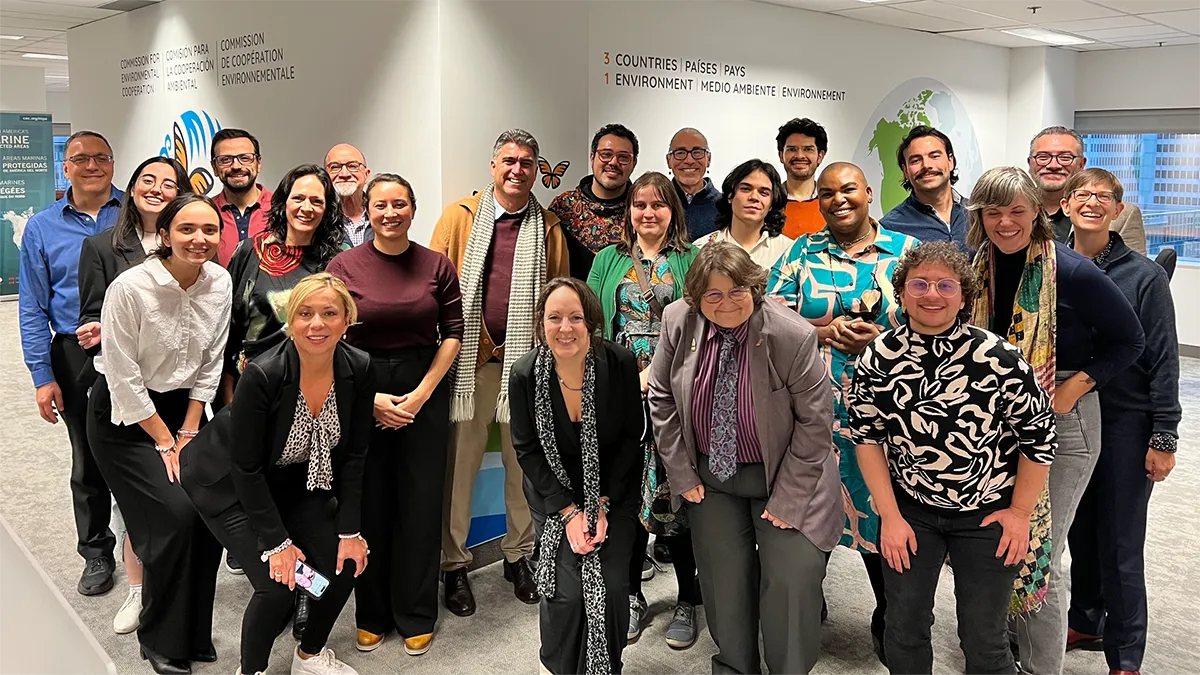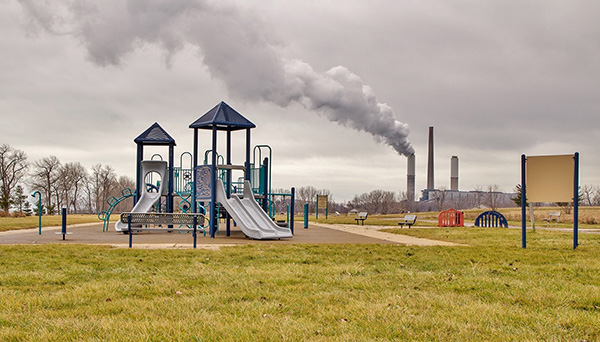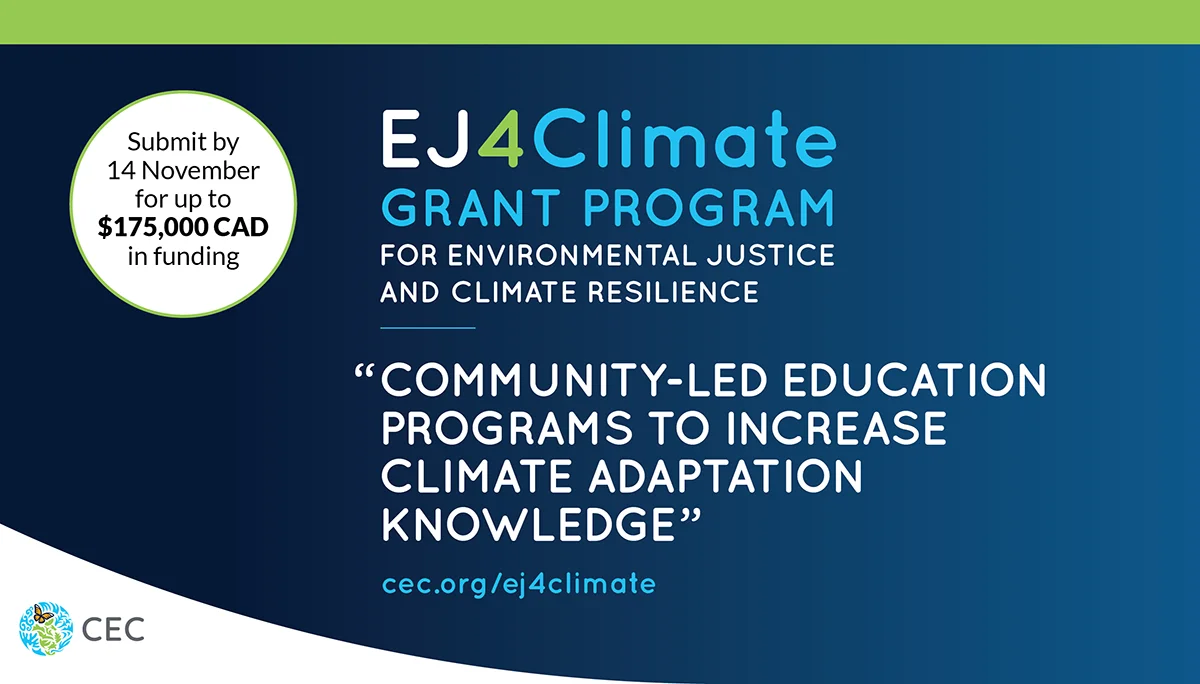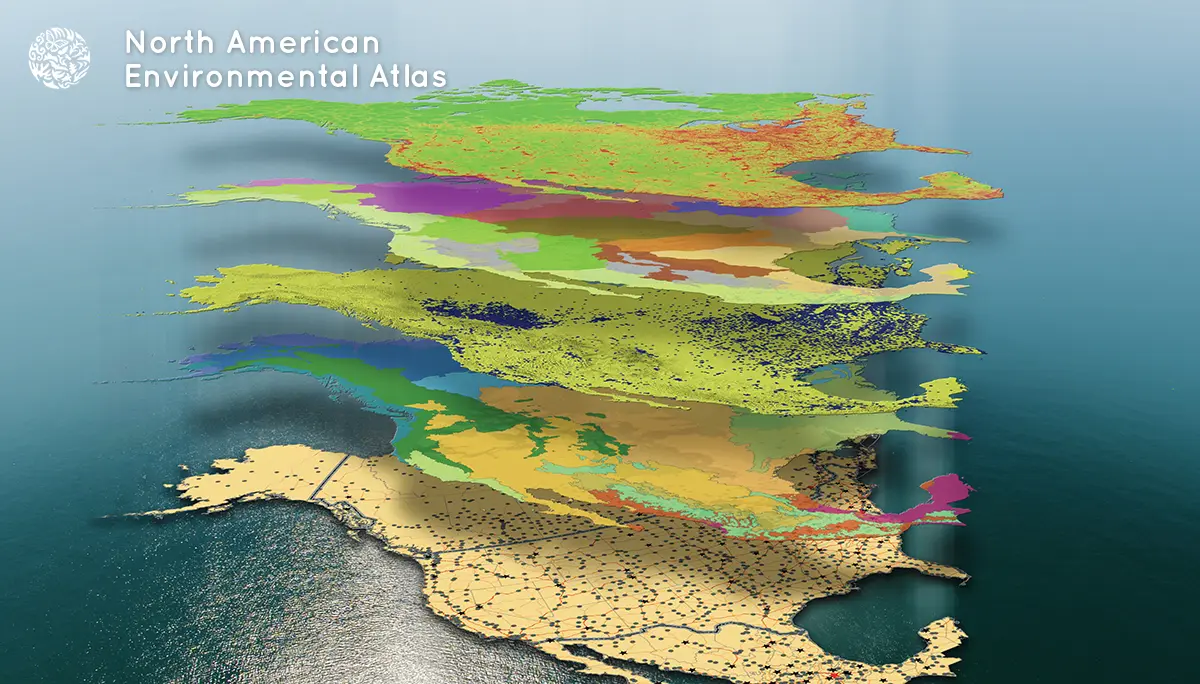Environmental Justice
The pursuit of environmental justice (EJ) aims to address historical inequities, marginalization and discrimination in how environmental benefits and burdens are enjoyed or suffered by certain communities.
EJ has become both an aspirational symbol and a public policy imperative for achieving a healthier, more sustainable and just society. Achieving environmental justice is central to the mission of the CEC.

#CEC31: 31st Annual Council Session and JPAC Public Forum
Mark your calendar for the Commission for Environmental Cooperation’s (CEC) 31st annual Council Session and Joint Public Advisory Committee (JPAC) Public Forum, to be held 24–26 June 2024 in Wilmington, North Carolina under the theme “Strengthening Environmental Justice through Community Empowerment.”

The CEC Council announced a new North American Environmental Justice Action Center (NAEJAC), a resource platform that will bring together community representatives, advocates and public officials from across our three countries to share and leverage best practices and tools for environmental justice. This platform also aims to identify opportunities to promote equitable and inclusive environmental justice actions across North America that will help our countries exchange knowledge and best practices with the goal of addressing inequities in historically marginalized and disadvantaged communities and sectors.
CEC Environmental Justice Discussion Paper
This discussion paper was used as background material for the Executive Director’s roundtable at the CEC Council Session in Wilmington North Carolina, in June 2024. It was intended to stimulate discussion and understanding of emerging trends in environmental justice work across North America.
Environmental Justice for 2SLGBTQIA+ Communities Discussion Paper
This discussion paper was used as background material for the Executive Director’s roundtable at the CEC Council Session in Wilmington North Carolina, in June 2024. It was intended to stimulate discussion and understanding of emerging trends in environmental justice work across North America.
It was prepared as result of the roundtable held on October 20, 2023, at the CEC headquarters in Montreal, which brought together experts from the Lesbian, Gay, Bisexual, Transgender, Queer, Intersex, + (LGBTQI+) communities and the CEC Secretariat to discuss priority actions and identify opportunities and challenges to promote the meaningful engagement of LGBTQI+ persons and to strengthen environmental conservation, the advancement of environmental justice and the inclusion of Indigenous knowledge, including Traditional Ecological Knowledge, and perspectives at the North American level.
What is Environmental Justice
Although the precise origins of environmental justice as a concept and as a movement are widely disputed, there is broad agreement that the self-labeled “EJ” movement initiated in the United States, emerging from the Civil Rights Movement and the fight against racial segregation that began in the 1950s. The EJ movement focused on the impacts of pollution on already disadvantaged and marginalized people, setting itself apart from the more traditional environmental movement focused on the conservation of natural resources.
Specific historical events have marked key moments of the EJ movement, such as the 1968 Memphis Sanitation Strike, which took place in Memphis, Tennessee after two African American sanitation workers were crushed to death while performing their duties. Subsequent EJ milestones, such as the 1982 sit-in protesting the Warren County PCB Landfill, began to consolidate the identity, narrative and terminology of the environmental justice movement, responding to evidence that demonstrated disproportionate rates of pollution with neighborhoods where African Americans and other people of color were predominantly living.
One key meeting, that catapulted the EJ movement onto the national stage in the United States, as well as drawing attention regionally and globally, was the 1991 First National People of Color Environmental Leadership Summit. Hundreds of activists from across the United States, Canada, Mexico, Central America and beyond gathered in Washington, D.C. for four days, ultimately issuing the 17 Principles of Environmental Justice, which are still considered pillars of the EJ movement today.
At its core, and since its origins, environmental justice is about protecting people from pollution and harm. It’s about racism, discrimination and human rights violations due to inequitable impacts of environmental degradation and pollution. The broader, global environmental justice movement has evolved in unison with a parallel international environmental movement more broadly associated to human rights and environment-based advocacy that emerged in the late twentieth century, which resonated with the EJ movement and embraced EJ-compatible narratives.
Is there a specific framework or lens to look at environmental justice from an Indigenous perspective? Are Indigenous rights issues also EJ issues? Is one the subset of the other, or are they interrelated? There is a growing body of literature and discussion on Indigenous Environmental Justice (IEJ). Indigenous analysis on the current shortcomings and deficiencies of Western-influenced development models in the past and present is strongly anchored in colonial history and persistent colonial and settler governance systems, which most Indigenous communities argue must be deconstructed, or decolonized, in order to re-establish a sustainable balance in the natural, spiritual and human worlds. This de-constructionist view of the present state of affairs guides a majority of advocacy about Indigenous rights and subsequently influences IEJ approaches.
We can identify several EJ-relevant aspirational goals in Indigenous rights advocacy, for example in the United Nations Declaration of the Rights of Indigenous Peoples (UNDRIP), such as the rights and pursuits for diversity, justice and access to justice, non-discrimination, equity, participation in decision-making, access to information, physical and mental health, redress, reparations and compensation, as well as intersectional considerations for vulnerable groups (including youth, elders, women and people with disabilities), non-discriminatory conservation of the environment and the proper management of toxic waste.
One gray area from an EJ framework analysis for specific IEJ issues concerns Indigenous Peoples’ calls for autonomy, sovereignty, self-determination, self-governance and the prioritization of the deconstruction of colonial legacies. In contrast to these aims of many Indigenous Peoples, many EJ leaders, although similarly critical of the legacies and continuing inequities of governance systems, are instead seeking inclusion and participation in existing governance systems, rather than autonomy or self-governance.
Environmental justice activism and academia over many decades have helped us understand that not everyone equally experiences the impacts of pollution, extreme heat, flooding and other environmental and climate effects. Some people can face multiple and interacting layers of systemic discrimination, due to their race, class, gender identity, sexual orientation, age, citizenship or resident status, visible or invisible disabilities, or some other aspect of their personal experience and/or identity.
In 1989, Kimberlé Crenshaw introduced a framework to consider how the intersection of social constructs such as race and gender can interact in non-mutually exclusive ways in socio-legal contexts. She focused on Black women that were suffering multiple and intersecting layers of discrimination based on racial and sexual discrimination, resulting in being “multiply-burdened.”
Crenshaw defined intersectionality as: “a metaphor for understanding the ways that multiple forms of inequality or disadvantage sometimes compound themselves and create obstacles that often are not understood within conventional ways of thinking.”
Several official Canadian definitions of environmental justice have recently appeared. Environment and Climate Change Canada’s (ECCC) Glossary on Climate Change and Public Health, defines EJ in the following manner:
“The principle under which every person, regardless of their race, ethnic origin, religion, sex or gender, age, social class or socioeconomic status, is entitled to equitable protection under environmental laws and can participate in environmental decision-making processes in their community.”
ECCC also offers a definition of environmental “injustice” which serves to contextualize the understanding of environmental justice in the Canadian context (highlighting equity of risk, human health and climate vulnerability):
“Environmental injustice refers to inequitable exposure to environmental risks, including to health risks, making some populations more vulnerable to climate change.”
A more recent definition of environmental justice (also defined relative to environmental “injustice”) can be found in Canada’s 2023 National Adaptation Strategy as follows:
“Environmental Justice: Environmental injustice reflects the procedural and geographic discrimination of Indigenous, Black, Racialized, religious, low-income, 2SLGBTQI+, women, and other marginalized communities such as the very young, older adults, or people who experience structural inequity, poverty, or isolation, placing said communities in close proximity to environmental hazards, often resulting in direct health impacts. These same communities are also under-represented in environmental decision-making spaces.”
The guiding principles of the National Adaptation Strategy also reference environmental justice (in a climate context) by saying:
“Adaptation efforts must act to advance climate justice and more broadly environmental justice. This includes addressing and minimizing social, gender, racial, and intergenerational inequities which requires diverse perspectives at the table—including youth and persons with disabilities. It also includes prioritizing populations and communities at greater risk of climate change impacts—e.g., due to historical and ongoing practices and policies that shape lived experiences, capacity and access to resources. As we build systems and solutions that are more climate resilience, we have the opportunity to address systemic inequities that make people more vulnerable.”
The term environmental justice appeared in Mexico in the 1990s and has generally been utilized in relation to issues of procedural justice. Currently, two government programs in Mexico in the environmental sector offer a definition of EJ.
The 2020–2024 Environment and Natural Resources Sectoral Program (Promarnat) 2020-2024 defines EJ narrowly, linked to judicial and procedural elements, as:
“The obtention of an opportune judicial solution to a specific environmental conflict, taking into account that all persons must begin with the same conditions to access environmental justice”.
PROFEPA’s 2021–2024 Procurement of Environmental Justice Program proposes a definition of EJ that includes additional and broader aspects related to EJ, defining EJ as:
“The rights of nature for all; individuals, families, communities, companies and other human groups in relation to the environment, considered as a common good, but in exchange of responsibilities and legal obligations these responsibilities and obligations oftentimes are grouped under the notion of “social and environmental responsibility”, the liberty to exploit the environment ends where it threatens others (and so it is an obligation not to over-exploit a resource), and where the environment (biodiversity, natural habitats, and genetic diversity) would be themselves threatened by human activities.”
The term environmental justice did not appear in regular use in the United States until the mid-1990s. Prior to this, the issue of EJ was referred to either as “environmental equity” or as “environmental racism.”
One of the most recent US government definitions of EJ is in Executive Order 14096, titled Revitalizing our Nation’s Commitment to Environmental Justice for All. In this April 2023 order, environmental justice is defined as follows:
““Environmental justice” means the just treatment and meaningful involvement of all people, regardless of income, race, color, national origin, Tribal affiliation, or disability, in agency decision-making and other Federal activities that affect human health and the environment so that people: (i) are fully protected from disproportionate and adverse human health and environmental effects (including risks) and hazards, including those related to climate change, the cumulative impacts of environmental and other burdens, and the legacy of racism or other structural or systemic barriers; and (ii) have equitable access to a healthy, sustainable, and resilient environment in which to live, play, work, learn, grow, worship, and engage in cultural and subsistence practices.”
Conversation Series on Environmental Justice in North America at the CEC
This conversation series engages diverse experts on environmental justice from across North America to explore the historical evolution, current state of, definitions, policies and emerging EJ issues in Canada, Mexico and the United States.

Environmental Justice: Origins, Evolution, and Emerging Policy in North America
31 August 2023
This conversation marked the launch of the “Conversation Series on Environmental Justice in North America at the CEC” presenting the conclusions of initial research by CEC interns on the evolution of environmental justice across Canada, Mexico and the United States. The conversation began with a broad overview of conceptualizations and definitions of environmental justice, highlighting EJ-related tools, programs, and public policies across North America. Representatives from the CEC Secretariat and Council attended a closed-door event to review the EJ research findings.

Environmental Justice in Canada
22 April 2024
This conversation centered on the history, nuances and manifestations of Environmental Justice (EJ) in Canada in a greater North American context. Discussions centered on the historical patterns of migration, colonialism and relations with Indigenous communities, and how these have shaped the Canadian understanding of EJ. The exchange also addressed the profile of community advocacy, private sector role and emerging legislative attempts to codify environmental justice in Canada.

Environmental Justice in Mexico
11 June 2024
This conversation explored the meaning of Environmental Justice (EJ) in Mexico. Invited experts offered their views on how the specific term of “environmental justice” in Mexico is generally understood relative to procedural elements of access to information, public participation and access to justice. And while not necessarily referred to as EJ in environmental or public policy narratives, experts also highlighted the relevance of agrarian, land and other post-colonial conflicts, Indigenous rights, marginalization and geographically-specific environmental pollution, as well as the risks faced by environmental defenders as central to the EJ discussion in Mexico.
Environmental Justice Tools
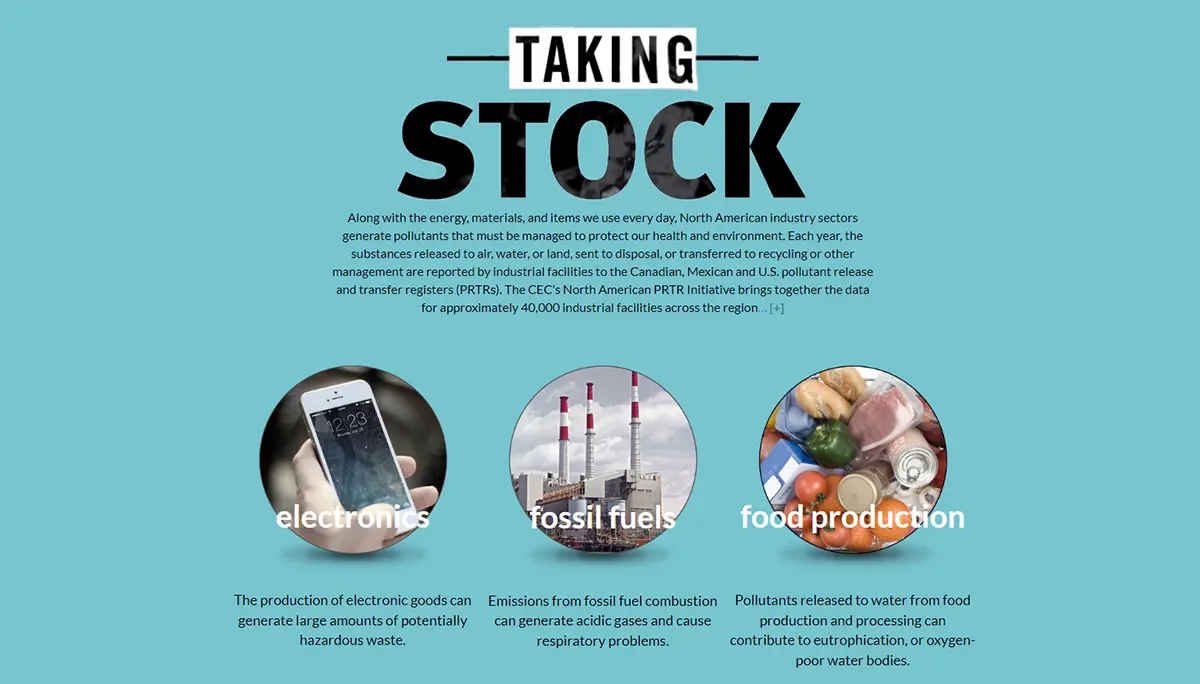
Taking Stock Online allows users to explore North American Pollutant Release and Transfer Register (PRTR) data through interactive tools and comprehensive reports.

